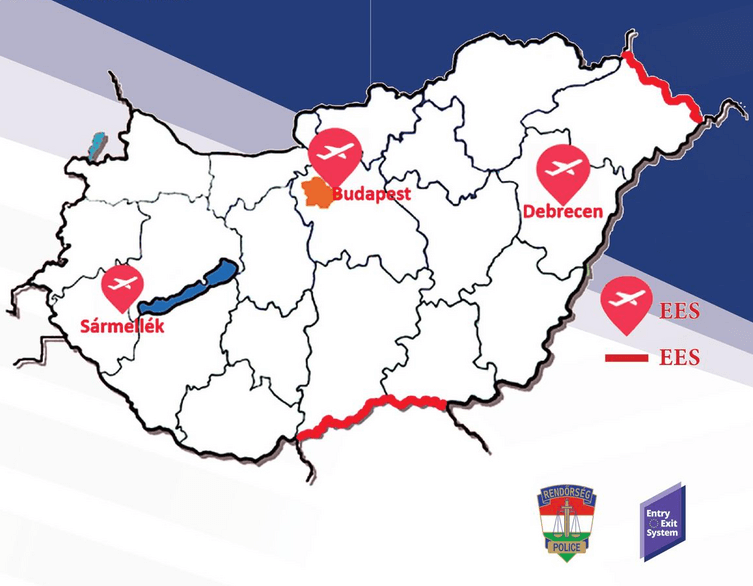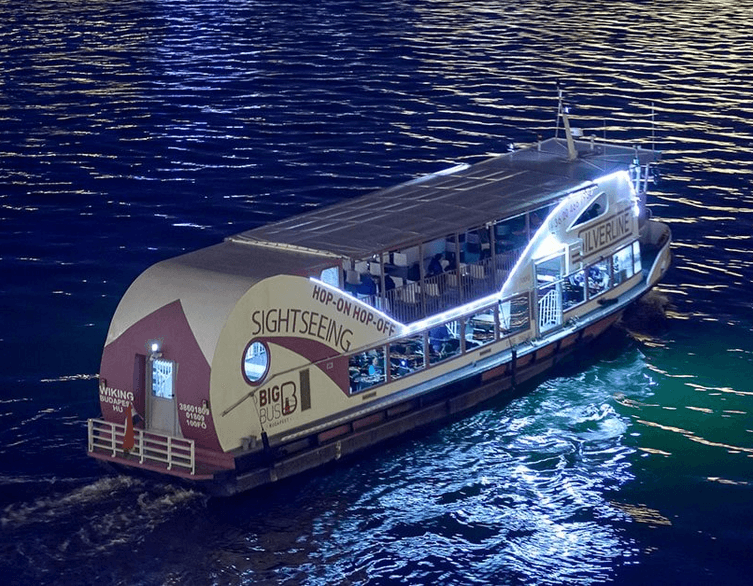EES Border Control System Transforms Travel Through Budapest Airport

If you’re planning a trip to Budapest from outside the European Union, there’s an important change you need to know about. Starting November 18, 2025, Budapest Ferenc Liszt International Airport has begun implementing the European Union’s new Entry/Exit System, a digital border control framework that’s modernizing how non-EU travelers enter the Schengen zone. This isn’t just a minor procedural update—it represents a fundamental shift in how Europe manages its borders, and understanding how it works will help ensure your arrival in Hungary’s beautiful capital goes smoothly.
The Entry/Exit System, commonly known by its abbreviation EES, officially launched across Europe on October 12, 2025, but its rollout is happening gradually at different border crossing points across 29 European countries. Budapest Airport joins this progressive implementation, introducing the system over the coming months with full operation expected by April 10, 2026. This phased approach gives both travelers and airport staff time to adapt to the new procedures without overwhelming the system.
Understanding Who Needs to Register
The EES applies specifically to non-EU nationals traveling to Schengen countries for short stays of up to 90 days within any 180-day period. If you’re arriving with a passport from the United Kingdom, United States, Canada, Australia, or any other country outside the European Union, you’ll need to register through this system. This includes both travelers who need visas and those who can visit visa-free, which covers most Western nationalities.
However, several categories of travelers are exempt from EES registration. If you hold a Hungarian or EU residence permit, you won’t need to register. The same applies to long-stay visa holders, diplomats, cross-border workers, and certain other privileged categories. Family members of EU nationals who hold residence cards are also exempt, as are nationals of Andorra, Monaco, San Marino, and Vatican City State. For UK nationals specifically, if you’re a resident in Hungary with valid documentation proving your status, you simply need to ensure you travel with your residence permit and won’t go through the EES process.
What Happens at Border Control
The first time you enter a Schengen country after EES implementation, the process involves several straightforward steps. When you reach the passport control booth at Budapest Airport, officers will collect your personal data from your passport, take a photograph of your face, and scan your fingerprints. This biometric information gets stored in a secure digital file that replaces the traditional passport stamps you might be used to seeing. The entire process creates a comprehensive digital record that includes your entry and exit dates, the location of your border crossing, and the calculated duration of your authorized stay.
The good news is that this registration isn’t something you need to repeat every time you visit Europe. Once your biometric data has been collected, it remains valid for three years. On subsequent trips within that timeframe, border control officers will simply verify your fingerprints and facial image against the stored data, which takes considerably less time than the initial registration. If you’re traveling with a biometric passport, you may even be able to use self-service kiosks where available, speeding up the process further.
Making Your Journey Smoother
Budapest Airport has taken steps to minimize any potential delays during this transition period. The airport displays boarding gate information earlier than usual, allowing passengers to proceed directly to the appropriate zone as soon as it appears on flight information screens. Since non-Schengen flights depart from gates located beyond the border control area, heading to your designated zone promptly helps maintain smooth passenger flow throughout the terminal.
To speed up your passage through border control, have your travel documents ready while waiting in line. This means keeping your passport, boarding pass, and residence permit (if applicable) easily accessible rather than buried in your luggage. The more prepared you are when you reach the control booth, the faster the process moves for everyone.
Europe has also developed a mobile application called “Travel to Europe” that allows eligible travelers to pre-register certain information up to 72 hours before their journey. The app lets you scan your passport data and submit a facial image in advance, potentially reducing time spent at border control. However, as of now, not all countries support this app, and availability may vary at Budapest Airport. The app is optional and doesn’t replace border checks, but it can help streamline the process when it becomes more widely available.
Best deals of Budapest
The Technology Behind the System
The EES operates as a cloud-based automated IT system that replaces manual passport stamping with digital record-keeping. Every time you enter or exit any of the 29 European countries using the system—including Austria, Belgium, Bulgaria, Croatia, Czech Republic, Denmark, Estonia, Finland, France, Germany, Greece, Hungary, Iceland, Italy, Latvia, Liechtenstein, Lithuania, Luxembourg, Malta, Netherlands, Norway, Poland, Portugal, Romania, Slovakia, Slovenia, Spain, Sweden, and Switzerland—the system logs your movement digitally.
Your stored information includes the data from your travel document, precise timestamps and locations of border crossings, your biometric data (facial image and fingerprints), and calculations tracking your remaining authorized stay within the 90-day limit. If you’re ever refused entry, that information is also recorded. The system stores this data for three years before it’s automatically deleted, providing a balance between security needs and privacy protection.
Why Europe Implemented This System
Understanding the reasoning behind EES helps explain why you’re encountering these new procedures. The system serves multiple important functions for European security and immigration management. By creating comprehensive digital records of entries and exits, authorities can more effectively prevent overstays and identify cases where travelers exceed their permitted 90-day limit within any 180-day period. The biometric data makes it much harder for individuals to use false identities or abuse visa-free travel privileges.
From a security perspective, EES gives border officers and law enforcement agencies access to crucial traveler information that helps identify potential security risks and supports investigations into serious crimes and terrorism. The digital nature of the system also makes border checks more efficient over time, as repeat travelers can move through controls faster once their initial registration is complete.
Special Considerations for UK Travelers
Since Brexit, UK nationals have found themselves in a new category when traveling to Europe. The EES treats British passport holders as non-EU nationals, which means the system applies to all UK citizens visiting the Schengen area for tourism, business, or other short stays. The silver lining is that UK nationals don’t require visas for stays up to 90 days, but they do need to complete the EES registration process.
For UK residents living in Hungary or holding Hungarian residence permits, the situation is different. As long as you have valid documentation proving your residency status and you travel with those documents, you’re exempt from EES registration. This exemption is particularly important for British citizens who moved to Hungary under the Withdrawal Agreement following Brexit, though you should verify your specific status with current guidance.
Planning Your Arrival
While the EES aims to make border crossings faster in the long run, the initial implementation period may involve some adjustment. It’s wise to allow extra time for your arrival at Budapest Airport, particularly during the first months of the system’s operation. Arriving with plenty of time before connecting flights or important appointments gives you a buffer against any unexpected delays as both travelers and staff become familiar with the new procedures.
The cost consideration is straightforward—there is no fee for EES registration. Unlike visa applications or other travel authorization systems, this is simply a border control procedure that’s conducted at no charge when you arrive. You don’t need to apply in advance, pay any processing fees, or complete paperwork before your trip. The registration happens automatically when you present yourself at border control.
Budapest Airport has positioned itself as a modern, efficient gateway to Central Europe, and the implementation of EES represents another step in that direction. While any change to established procedures can feel inconvenient initially, the system is designed to ultimately make your travel experience faster and more secure. Once you’ve completed your first registration, subsequent trips to Budapest and other European destinations become quicker, and the digital record-keeping eliminates concerns about passport stamps running out of space or becoming illegible.
As you plan your journey to Budapest, whether you’re coming to explore the city’s stunning architecture along the Danube, relax in its famous thermal baths, or experience its vibrant cultural scene, understanding the EES ensures that your entry into Hungary starts smoothly. The system may seem complex at first glance, but in practice, it’s simply a modernized approach to border control that will soon become as routine as showing your passport has always been.
















